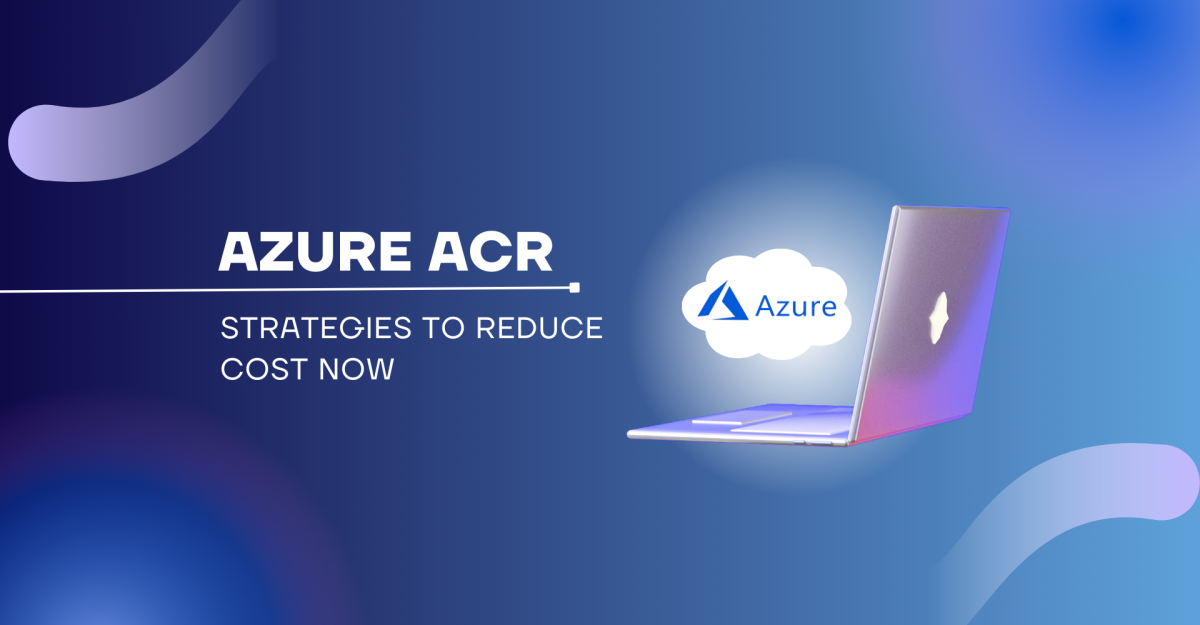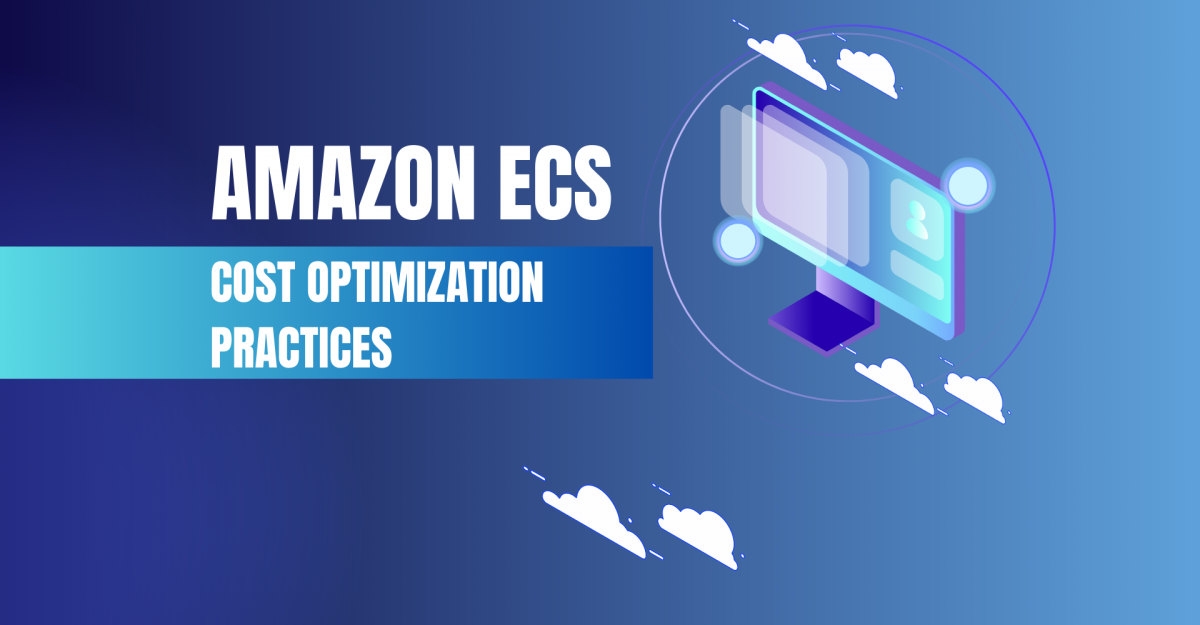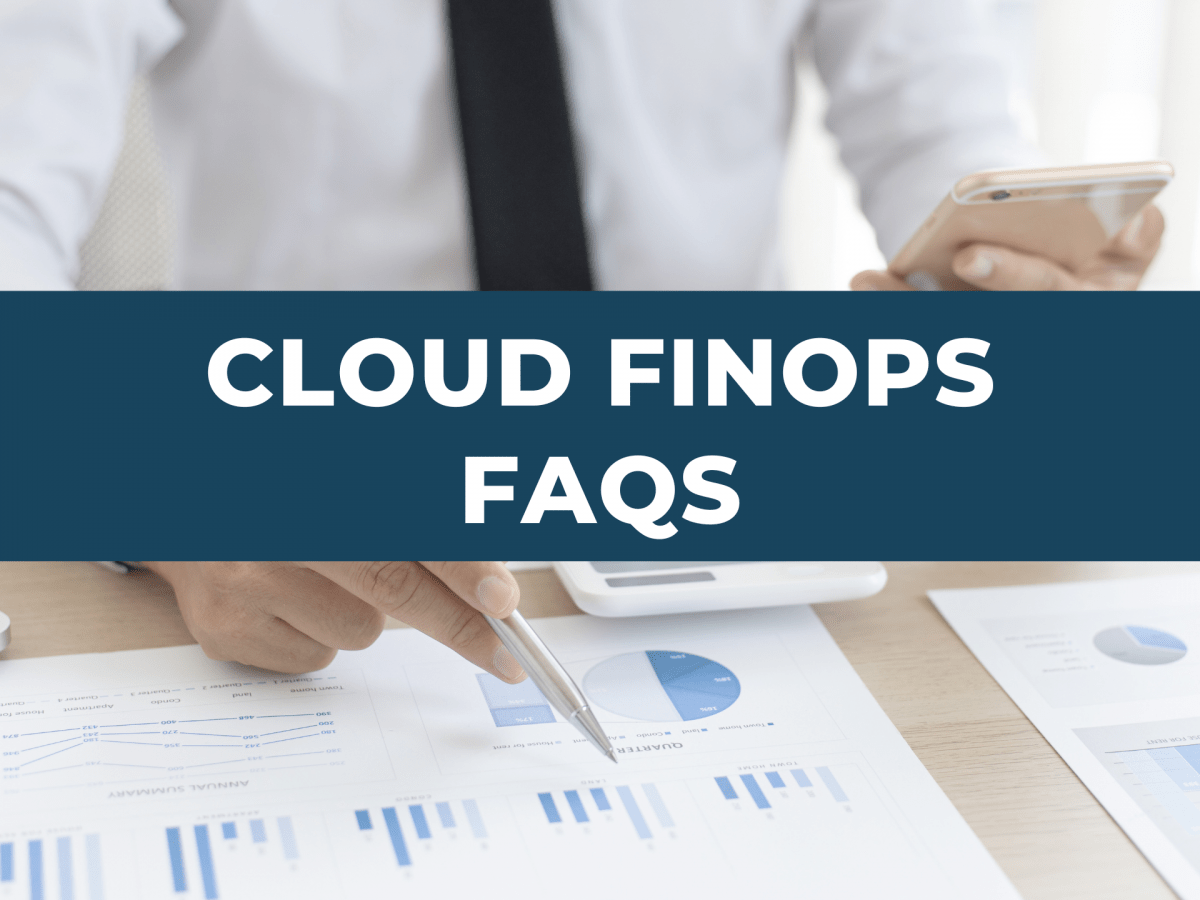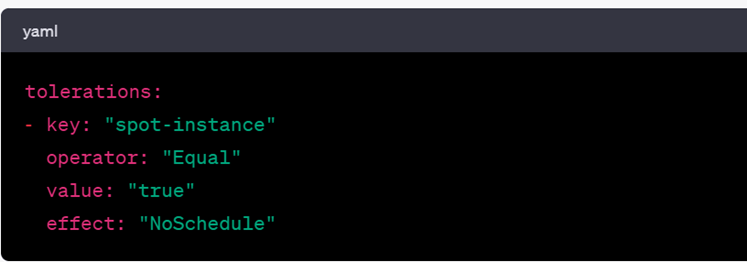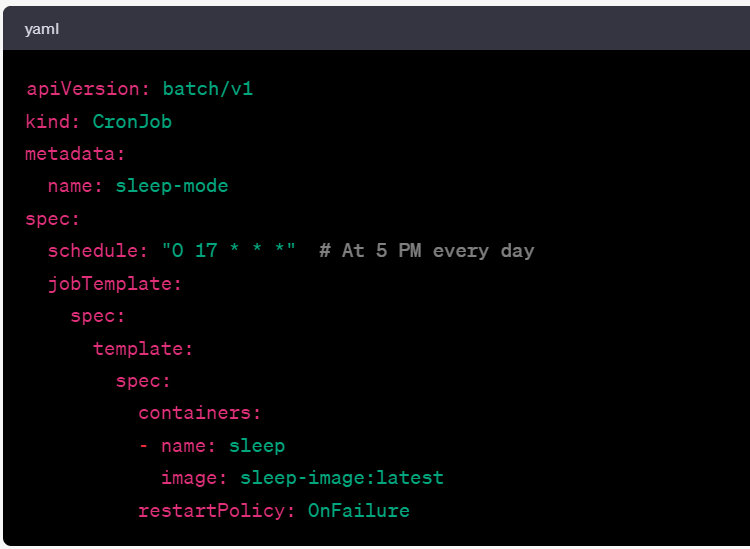Enterprises globally prefer to use cloud cost optimization tools to maximize their cloud investments. While certain organizations use native tools provided by AWS, GCP, and Azure others tend to opt for homegrown tools or third-party tools. Few even mix up to reduce cloud spending. According to a report from report of the FinOps Foundation, enterprises use an average of 3.7 tools for their cloud cost optimization process. Let’s see in this article a few of the best cloud cost optimization tools you can evaluate for 2024.
Cloud Native – It leverages the power of cloud features like scalability, elasticity, etc. facilitating faster deployment
Externalized Business Rule Engine – It allows the user to play around with multiple cloud assets recommendations, so the user has the flexibility to choose as per their infrastructure and project needs.
Non-intrusive nature – It stays within your cloud environment eliminating the need to worry about the security breach and third-party intrusion
Role-based data access – Customizing the cost optimization data visibility based on roles (Engineering team, Finance team, etc.) is simple with Cloud CADI.
Showback- It allows you to drill down and find the root cause of the cost overruns to take immediate actions.
End-to-End Automation- It facilitates the seamless integration of ticketing tools like ServiceNow.
Alerts- It has customizable reporting& alert capabilities to give visibility over IaaS/SaaS/PaaS services and assets, resulting in a better understanding of activities in the cloud
Clients – Johnson & Johnson, Unisys, GSM Outdoors, Exafluence, DigiKey
Founded – 2019
HQ: New Jersey, USA
Other Tools
‘Finops Foundation‘ is a non-profit organization that was established to promote best practices, standards, and education in the emerging field of cloud financial management, recently released a report on “Different Usage Types of FinOps Tools” (ref. figure below). Let’s see some of the tools mentioned,

A native product of AWS cloud service provider helps to visualize, understand, and manage your AWS costs and usage over time. Few key features are,
-
- Monthly costs report – AWS Cost Explorer includes a default report that helps you visualize the costs and usage associated with your top five cost-accruing AWS services and gives you a detailed breakdown of all services in the table view.
-
- Hourly & resource level granularity – AWS Cost Explorer helps you visualize, understand, and manage your AWS costs and usage over a daily or monthly granularity.
-
- Savings plan reports – It provides you with two reports to help analyse your Savings Plans purchases and saving opportunities – Savings Plans utilization report and Savings Plans coverage report.
-
- Reservation reports – The reservation utilization report visualizes your aggregate reservation utilization and allows you to set a custom reservation utilization target. The reservation coverage report visualizes your overall reservation coverage and allows you to set a custom reservation coverage target.
Few Clients – Verisk, Airbnb, Arista
Founded – 2014
HQ: Seattle, Washington, United States.
Cloudability, a product of Apptio, ingests, normalizes, and structures cloud billing and usage data from across your public cloud ecosystem to actively manage spending and consumption to continuously improve the unit economics of cloud service. Few key features are,
-
- Budgets & forecasting – Establish team budgets, accurately forecast, and track cloud spend
-
- Cloud cost summary Dashboard – Correlate cloud spend to business value to make cloud investment decisions with confidence
-
- Rightsizing recommendations- Stay informed of costs and act on anomalies and rightsizing opportunities by team, service, or project
-
- True Cost Explorer – Accurately allocate all costs, including containers and support charges, to ensure a full chargeback of cloud costs to the business
Few Clients: ibotta, Agero, OLX Group, seek
Founded: 2011
HQ: Portland, Oregon, United States
Subsidiaries: Datahero, Inc., Digtal Mines Ltd., RipFrog, Inc.
Cloud Health is a product of VMWare, which delivers intelligent insights that help you optimize costs, improve governance, and strengthen your cloud security posture. Some of its few key capabilities are,
-
- Resource organization & management – Cloud Health FlexOrgs helps in aligning cloud data with the business offering greater control of user access, sharing, etc.
-
- Reporting & Dashboards- Filter and refine out-of-the-box graphical and tabular reports to correlate datasets for analysis against your business objectives.
-
- Budget management and forecasting – Configure budgets to visualize your expected costs for the year in advance and compare it with actual spending as the year progresses.
Few Clients – Experian, Salesforce, Harman, Scholastic
Founded – 2012
HQ: Boston, Massachusetts, United States
Datadog Cloud Cost Management delivers cost data where engineers work and with resource level context like CPU, memory, and requests easily scoped to their services and applications so that they can take action and spend effectively. Some of its key features,
- Instantly allocate your cloud costs across cloud providers and by product, service, and team, with out of the box and user defined tags
- Identify the biggest cost changes and use powerful queries to drill down to resource-level spend
- Make cost decisions with confidence with built in cost validation that ensures high data accuracy
A few Clients: Samsung, Siemens, Deloitte, Sony, Comcast, Maersk
HQ: NewYork, US
Founded: 2010

If optimizing your expenses on Kubernetes is your ultimate goal, Kubecost can be a right fit.
Kubecost provides real-time cost visibility and insights for teams using Kubernetes, helping you continuously reduce your cloud costs. Few key features are,
- Cost allocation – Breakdown costs by any Kubernetes concepts, including deployment, service, namespace label, and more.
- Optimization insights – Receive dynamic recommendations for reducing spend without sacrificing performance.
- Alerts & governance – Quickly catch cost overruns and infrastructure outage risks before they become a problem with real-time notifications
A few Clients – Datagen, Camunda, Under Armour
HQ: San Francisco, CA, US.
Founded: 2019
Azure Cost Management is a native tool from Microsoft Azure cloud service helps to leverage the cloud environment and implement financial governance in your organization. Few key features are,
-
- Cost analysis – Track resource usage and manage cloud costs across all your clouds with a single, unified view while accessing rich operational and financial insights to make informed decisions.
-
- Drive organizational accountability – Implement governance policies for effective enterprise cloud cost management and increase accountability with cost allocation and chargebacks.
-
- Optimise cloud efficiency – Improve the return on your cloud investment by using continuous cost optimization and industry best practices.
-
- Manage Azure and AWS together – Manage costs across Azure and AWS from a single location. Get insights based on data from both clouds to simplify your cost management processes.
Few Clients: Schneider Electric, over 70% of Azure’s enterprise clients use Azure Cost Management
HQ: Redmond, United States
Pricing: Free for Azure
A cloud-native tool from GCP aids in organizing cloud resources, taking control of your cloud costs, optimizing spending and savings. Key features go like this,
-
- Resource hierarchy and access controls – Structure and organize your resource hierarchy for fine-grained management and cost allocation using organizations, folders, projects, and labels.
-
- Reports, dashboards, budgets, and alerts – Get at-a-glance views of your current cost trends and forecasts with intuitive reports in the cloud console and set budgets to closely monitor your costs and alert stakeholders through email or Pub/Sub when exceeding defined budget thresholds.
-
- Recommendations – View intelligent recommendations for optimizing your costs and usage.
A few Clients – Etsy, Vendasta
HQ: Mountain View, California, United States
CloudCheckr is now part of Spot (by NetApp) brings visibility and intelligence to help you lower costs, maintain security and compliance, and optimize resources. Features are,
-
- Cost visualization – Experience the power of the industry’s easiest-to-create reports and share dashboards to get insight into key trends and what’s driving spend.
-
- True intelligence – Understand why companies save 30% or more with smarter purchase recommendations and with hundreds of best practice checks to identify specific savings opportunities.
-
- Single view – Align SecOps, InfoSec, DevOps and FinOps by ensuring strong security posture in the same platform that cost, resources and services are managed.
-
- Customizable tools – Its customizable tools help to differentiate your service offerings and improve profitability.
A few Clients – Accenture, Logitech, Lumen
HQ: Mountain View, California, United States
Founded: 2011
It is a opensource cloud security, governance and management platform from Capital One that allows user to easily define rules to enable a well-managed cloud infrastructure, that’s both secure and cost optimized. Custodian supports managing AWS, Azure, and GCP public cloud environments. Significant features are,
-
- Real-time compliance – Besides just providing reports of issues, Custodian can actively enforce the security policies you define.
-
- Cost Management – Setup off-hours to save you money, by turning-off resources when they’re not being used. Garbage collects unused resources by looking into utilization metrics.
-
- Run anywhere – Custodian can be run locally on an instance, or Serverless in AWS Lambda.
-
- Simple DSL – Use Custodian to build complex workflows or simple queries, millions of policies can be constructed using our easy-to-read DSL.
HQ: Virginia United States
Founded: 2016
A product of SoftwareOne is a single platform to transact software licenses and cloud subscriptions, view your entire on-premises and cloud software estate, while leveraging a combined view of your technology platforms and commercial agreements to make informed business decisions. It offers benefits like,
-
- Visibility and accountability of software usage and spend
-
- Identify software cost saving opportunities
-
- Automation to drive operational efficiency
-
- Insights for rightsizing and reducing compliance risks
A few Clients: DreBler, PRMG
HQ: Stans, Switzerland
Founded: 2016

With Flexera you can get visibility into cloud usage and costs for all your cloud accounts. You can evaluate and report on your most cost-effective regions and instance sizes, and dive deep into public and private cloud costs by application, category, business unit, cost center, department, or team.
Features,
-
- Complete cost visibility – Get a complete picture of public and private cloud costs including compute, network, and storage with combined billing data and detailed usage information
-
- Cost allocation by center/team – Tag cloud resources to track cloud budget and spend and enable invoice reconciliation and allocation to cost centers/teams with specific markups and markdowns on cloud costs
-
- Cost anomalies alerting – Automatically calculated spend anomalies reporting gives you insight and the culprits behind spikes and reduction in cloud spending by a variety of variables
-
- Robust cost monitoring – Analyze, forecast, budget, and report on cloud infrastructure costs by an assortment of factors, including cloud provider, account, and region
A few Clients: Walmart, Toyota, Shell
HQ: Itasca, Ilinois, United States
Founded: 1988
Summary
While there are abundant of tools available in the market, not every tool is suitable for everyone. Every business is different and so as their cloud needs. Adopt the right cloud FinOps/cloud cost optimization tool and start leveraging your cloud environment now. If your organization needs are unique and looking for a customizable cloud cost optimization tool with complete control of data, try CloudCADI.


